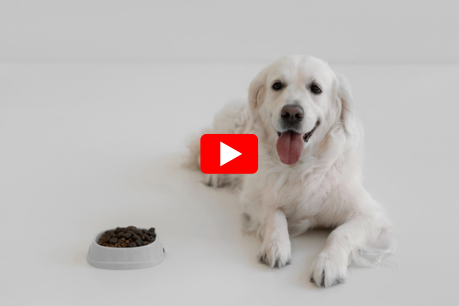Pyoderma In Dogs: Causes, Symptoms & Effective Treatment Tips
Pyoderma in dogs is a frequent skin condition that many pet owners encounter. It is essentially a bacterial skin infection that affects the dog’s skin, causing irritation, redness, and discomfort.
Pyoderma in dogs is a common bacterial skin infection causing redness, itching, and sores. Timely treatment with antibiotics usually clears it up.
This condition can be superficial or deep, depending on the severity and extent of the infection. Understanding pyoderma, its causes, symptoms, and treatment options can help pet owners recognize the problem early and seek appropriate veterinary care.
What is Pyoderma in Dogs?
Pyoderma is a general term for bacterial skin infections in dogs. The word “pyoderma” literally means “pus in the skin,” and it typically involves the presence of pus-filled lesions caused by bacterial overgrowth.
Most cases of pyoderma in dogs are caused by the bacterium Staphylococcus pseudintermedius, a normal inhabitant of the dog’s skin that can become pathogenic under certain conditions.
There are two main types of pyoderma:
- Superficial Pyoderma: This affects only the upper layers of the skin and hair follicles. It is more common and usually easier to treat.
- Deep Pyoderma: This infection extends into deeper layers of the skin and may cause more severe symptoms, often requiring more aggressive treatment.
Causes of Pyoderma in Dogs
Pyoderma does not usually develop spontaneously. Instead, it occurs as a secondary problem when the dog’s normal skin defenses are compromised. Various underlying factors can predispose a dog to pyoderma, including:
- Allergies: Environmental allergies (like pollen or dust mites), food allergies, and flea allergy dermatitis can cause itching and skin inflammation, making it easier for bacteria to infect the skin.
- Parasites: Fleas, mites, or ticks can cause irritation and skin damage.
- Hormonal Imbalances: Conditions like hypothyroidism and Cushing’s disease can weaken the skin’s ability to fight infection.
- Poor Grooming and Hygiene: Excessive moisture, dirt, or neglect can create an environment for bacteria to thrive.
- Skin Trauma: Scratches, wounds, or insect bites can introduce bacteria.
- Immune System Disorders: Dogs with weakened immune systems are more vulnerable.
- Breed Predisposition: Some breeds, such as Bulldogs, Retrievers, and Shar Peis, are more prone to skin infections.
Symptoms of Pyoderma in Dogs
The signs of pyoderma can vary depending on the infection’s severity and location. Common symptoms include:
- Redness and inflammation of the skin
- Itching and scratching, sometimes severe
- Pustules or pus-filled bumps on the skin
- Hair loss or thinning around the affected area
- Crusty or scaly skin patches
- Foul odor from the infected skin
- Moist or oozing sores
- Thickened skin in chronic cases
These symptoms often cause significant discomfort and can lead to behavioral changes such as irritability or lethargy.
Diagnosing Pyoderma in Dogs
If your dog shows signs of skin infection, a veterinary visit is essential. The veterinarian will perform a thorough physical examination and may conduct diagnostic tests such as:
- Skin Scrapings: To check for parasites.
- Cytology: Collecting skin cells to identify bacteria or yeast under a microscope.
- Bacterial Culture and Sensitivity: To determine the specific bacteria and the best antibiotics to treat it.
- Blood Tests: To rule out hormonal imbalances or systemic issues.
Accurate diagnosis helps ensure effective treatment tailored to your dog’s specific condition.
Treatment of Pyoderma in Dogs
Treatment depends on the severity and type of pyoderma. Common treatment strategies include:
- Antibiotics: Oral or topical antibiotics are often necessary. The choice and duration depend on the infection’s depth and response to treatment.
- Medicated Shampoos: Antibacterial or antiseptic shampoos can reduce bacterial load and soothe irritated skin.
- Addressing Underlying Causes: Treating allergies, parasites, or hormonal disorders is crucial to prevent recurrence.
- Topical Treatments: Creams, sprays, or wipes containing antibiotics or antiseptics may be recommended.
- Proper Grooming: Keeping your dog’s coat clean and dry helps skin heal and prevents further infection.
- Pain Relief: In severe or deep infections, pain management may be necessary.
It is critical to follow the veterinarian’s instructions closely and complete the full course of treatment even if symptoms improve early.
Preventing Pyoderma in Dogs
Preventing pyoderma largely involves good skin care and managing underlying conditions:
- Regular grooming and bathing with suitable shampoos
- Flea and parasite control
- Proper nutrition to support skin health
- Managing allergies with veterinary guidance
- Regular veterinary checkups to catch skin issues early
- Keeping your dog’s living environment clean and dry
Conclusion
Pyoderma in dogs is a common but manageable bacterial skin infection.
Recognizing the signs early, understanding the underlying causes, and following appropriate treatment plans can help your furry friend get back to comfort and health quickly.
Remember, untreated pyoderma can worsen, so prompt veterinary care is essential for the best outcomes.



